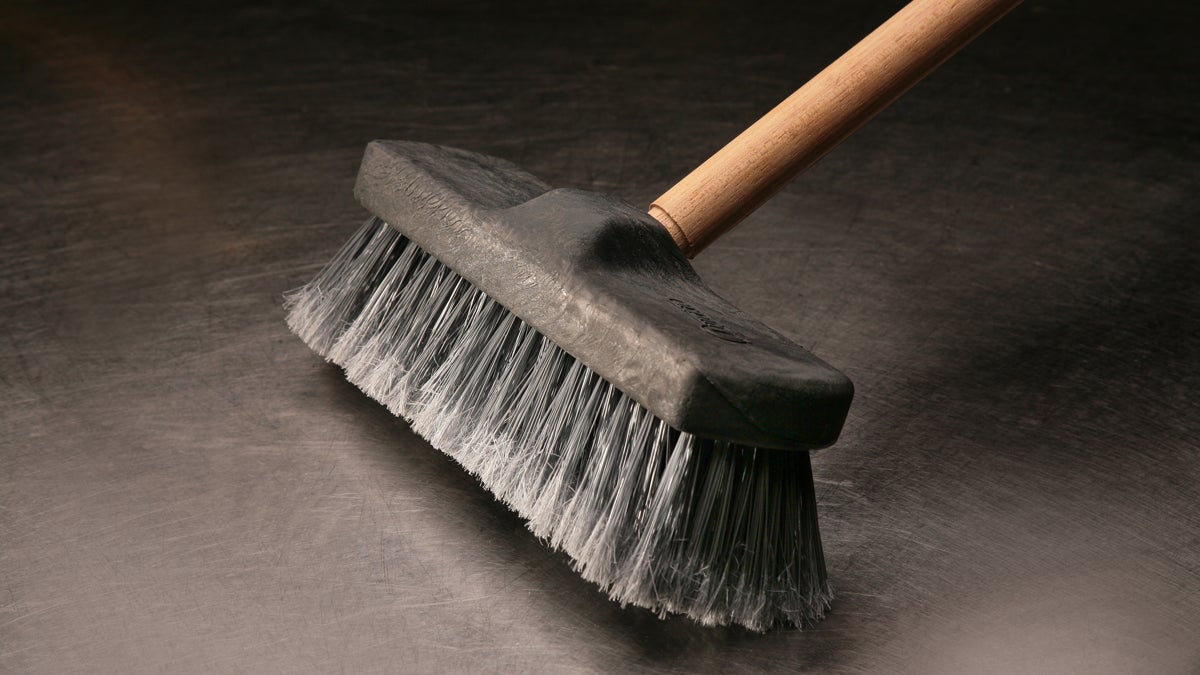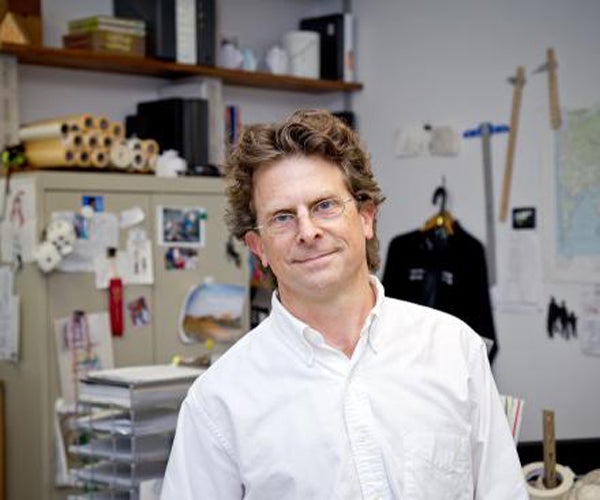A daily reboot keeps this Philly teacher ‘there for today’ with his students

(Broom image courtesy of Shutterstock.com)
Teaching is a day-long journey that requires bucketfuls of energy. I talked recently to a Philadelphia public school teacher who relies on ritual to survive his high-performance workplace.
I’m a big believer in ritual. Whether they’re for people like us to get through the day, or for households, companies, or communities, rituals are a deep, human way of creating rhythm, focus and touchstones in what otherwise might feel like confusion.
I talked recently to a Philadelphia public school teacher who relies on ritual in his high-performance workplace.
Andrew Phillips is a licensed architect and a full-time design teacher at Philadelphia’s Charter High School for Architecture and Design in Center City. The school was created by the American Institute of Architects to increase the role of minorities in the design and architecture professions. It’s students mostly come from lower-income backgrounds.
 (Image courtesy of Charter High School for Architecture and Design)
(Image courtesy of Charter High School for Architecture and Design)
Teaching as ‘performance’
Teaching is a day-long journey. It brings surprises (both wanted and unwanted), and it requires bucketfuls of energy to connect with students all day — often while working in situations that are less than supported by the funding and services teachers need.
A department co-chair, Phillips teaches mainly 11th and 12th graders, though he also heads up the yearbook team. When I asked how the end of the day usually feels to him, he says that he’s depleted, but not in a permanent way.
“It’s the end of a performance,” he says. “If you’re not a bit tapped out, you probably didn’t give it your all.”
And what about at the end of a really tough day? Turns out he does the same thing he does on a really good day. “I clean the room,” he says, laughing. “I need to leave my room ready to go for the next day so I can step away and know that much is ready. Then I can get the rest of me rejuvenated.”
I asked what other rituals he had for that rejuvenation.
“I go through an evening routine that involves taking care of the kids and some form of exercise or yoga, reading and writing, spiritual stuff,” he says. “That gets me back to the reboot.”
Which means that the ritual — the reboot — is as much about the future as the day past. “You’ll have the awful day, but they’re rare,” he says. “Like, you find out a student has gotten shot and killed. What do you do? You throw your clipboard at the wall. Then you pick it up and clean your room.
“Whatever happened the day before, you have to walk in and start all over again,” he says. “The students don’t care if you had a bad day the day before. They’re there for today, so you have to be too. You find something healthy and cathartic, and you make it part of your routine, your ritual, every night. If you’re not ready to go the next morning, you’re already toast.”
Ten words
Phillips has rituals that help ground him throughout the day. One in particular, which he had learned about from Buddhism, really caught my interest.
“I have a little 3×5 book I take notes in six times a day,” Phillips explains. “The whole idea is I’m checking in with myself at regular intervals.” He starts with 10 particular words, which he calls “creeds,” adapted from a variety of sources over the years. The words, and combinations of words, seem full of possibility to me. For example: “sacred life,” “possess/less,” “build/bond,” “lift/anchor,” “double joy,” and “halve grief.” Were those nouns? Verbs?
Well, yes — either. At points throughout the day, he sits down with some of the words from the list, letting them act as triggers for ways of seeing where he is right then.
“For each word,” Phillips says, “I write a plus, minus, and a to-do intention for it. That checking-in in a fairly structured way is part of me not getting lost through the day.”
He gives an example that makes it concrete really quickly: “Like — ‘double-joy.’ If someone came with happy news, joy shared is doubled. Grief shared is halved. It can be basic and simple, like ‘sacred life.’ Maybe it’s picking up trash from the floor so somebody doesn’t slip and fall.”
Look where you are
“In the end, it’s really about awareness,” he summarizes. “It grounds me in the moment. In my classroom, there is no front of the room. Teaching design is a contact sport. You’re right next to the students working on projects. It’s physically and emotionally demanding. If you’re blunt and honest, working side by side, you can diffuse a lot of tension if you offer a critique through a funny remark. Then you work better together.”
In a hectic and demanding day, Phillips’ spiritual ritual is there to let him “be there” — and enjoy being there.
His spirituality is central to the work he does, but Phillips bypasses a lot of the spiritual jargon out there and goes straight to the heart of just being who he is. “When I left U Penn after 15 years to teach at CHAD, everyone asked, ‘Do you like it?’ My stock answer became, like, ‘I like ice cream’ — it’s not about whether I ‘like’ it; this work is what I’m supposed to be doing right now. That’s my spiritual sustenance.”
His closing insight seemed to me to be a gift to us all, in how it might serve as a question for our own work lives. “The dirty secret is that the best teachers are good students. They teach because they want to keep learning. I learn about myself, urban issues, spirituality, work. So I’m learning about work at work.”
WHYY is your source for fact-based, in-depth journalism and information. As a nonprofit organization, we rely on financial support from readers like you. Please give today.




